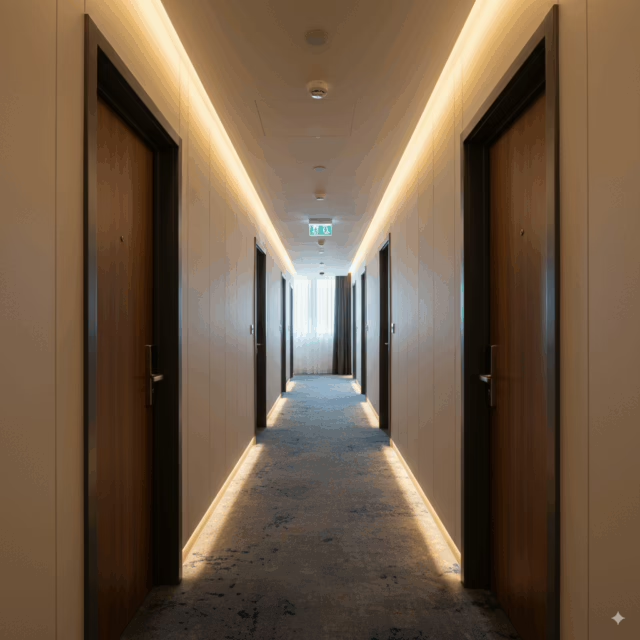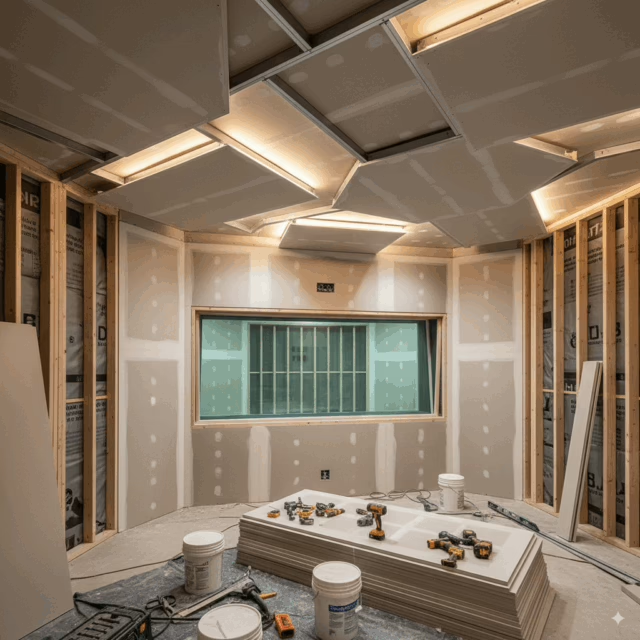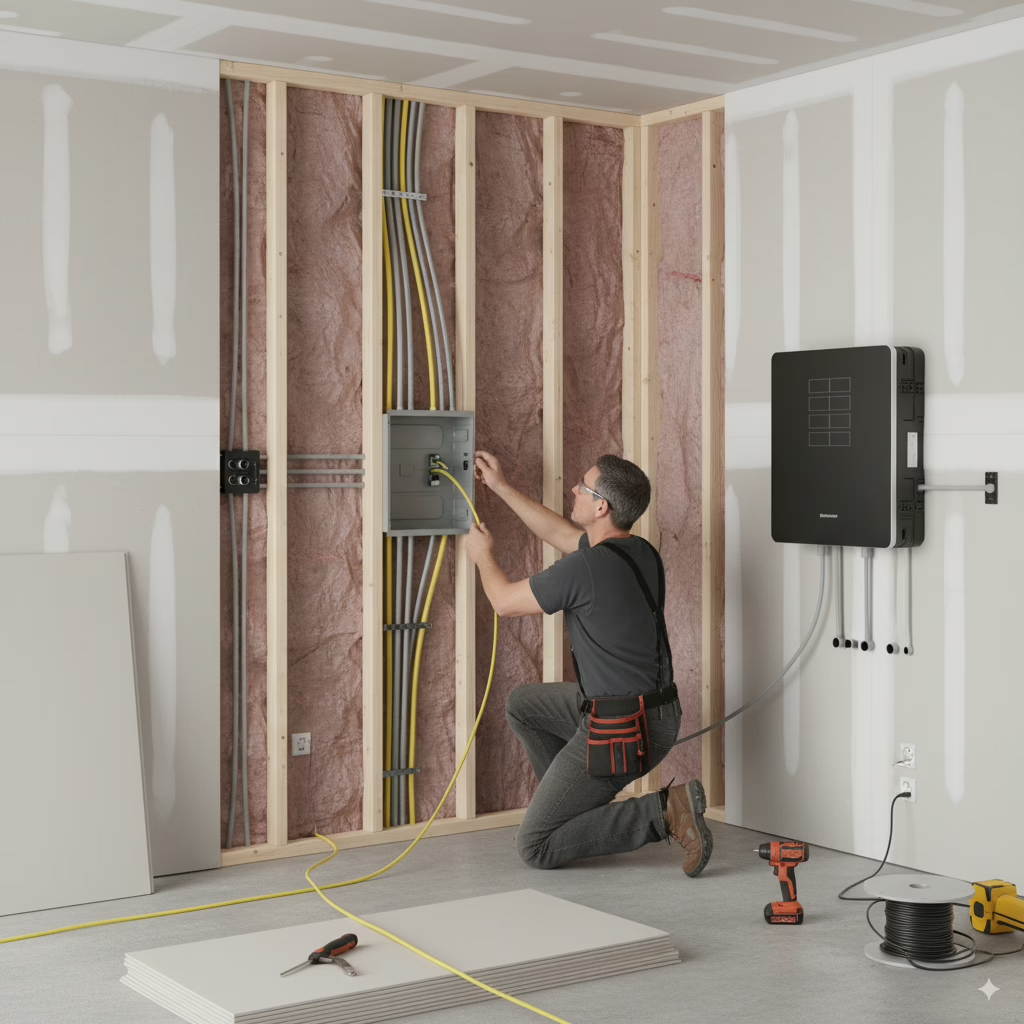Building owners want energy independence, clean power, and lower bills. Fortunately, Renewable energy Drywall makes that transition faster and cleaner. It supports solar wiring, battery storage, heat pumps, and EV charging without compromising safety or design. Moreover, it protects performance with airtightness, fire separations, and smart access.
This guide explains how to plan, install, and finish Renewable energy Drywall assemblies that work seamlessly with modern green systems.
Why choose drywall for renewable-ready spaces?
Drywall is light, adaptable, and code-friendly. Therefore, it pairs perfectly with solar and electrification upgrades.
Key advantages of Renewable energy Drywall:
- Fast routing of DC/AC conductors and low-voltage lines
- Clean access to inverters, batteries, and smart panels
- Rated assemblies for fire and smoke control
- Low-VOC options that support healthy interiors
- Recycled-content boards that align with ESG goals
Explore renewable-ready scopes on our Services page.
How does drywall support solar + storage?
Renewable energy Drywall simplifies solar and battery integration across garages, utility rooms, and closets.
- Concealed conduit paths: Pre-plan chases from roof to service panel.
- Equipment backing: Add plywood backing where inverters or ESS mount.
- Fire containment: Use Type X or Type C where ratings are required.
- Access panels: Provide discrete panels for disconnects and monitoring.
- Airtight seals: Caulk penetrations to preserve envelope performance.
Because gear locations vary, coordinate with electricians early. Learn how we coordinate trades on About Us.
Heat pumps, ERVs, and smart HVAC inside drywall
Electrification brings new mechanical runs. Renewable energy Drywall handles them cleanly.
- Frame soffits for refrigerant lines and condensate drains.
- Isolate vibration with resilient channels near air handlers.
- Add service clearances and labeled access points.
- Seal bulkheads for both sound and energy efficiency.
As a result, you keep interiors quiet, efficient, and easy to service.
EV chargers and panel upgrades
Upgrading to Level 2 EV charging often requires new circuits and panel work. With Renewable energy Drywall, you can:
- Pre-place blocking for cable management and wallboxes.
- Route EMT or MC behind finished surfaces cleanly.
- Install flush access for breakers, CT clamps, and smart monitors.
- Protect corners with impact beads in tight garages.
Need a renewable-ready plan? Start at HD Drywall.
Safety and code: details that matter
Renewable systems add heat and electrical risk. Consequently, detailing is crucial.
- Fire-rated separations: Use listed assemblies between garages and living areas.
- Head-of-wall joints: Maintain ratings while allowing structural movement.
- Penetration sealing: Firestop every conduit and cable bundle.
- Moisture zones: Use mold-resistant board near condensate or ERV lines.
- Labeling: Identify hidden chases and pull strings for future circuits.
When in doubt, ask your AHJ and follow manufacturer listings. For submittal-ready details, contact us.
Materials and finishes for renewable-ready builds
Select materials that speed work, protect performance, and finish beautifully.
- Type X fire-rated drywall for utility areas and corridors
- Paperless or mold-resistant board near mechanicals
- Acoustic sealant at perimeters for quiet, tight envelopes
- Low-dust compounds to keep equipment clean during install
- Level 4 for most rooms; Level 5 under critical light
Follow our jobsite tips on Facebook.
Design checklist: make it future-proof
Use this quick list to keep Renewable energy Drywall projects on track:
- Map solar, ESS, ERV, and heat pump gear early.
- Add blocking and access at all equipment points.
- Standardize chases from roof to main panel.
- Protect with fire-rated assemblies where required.
- Seal penetrations for energy, fire, and sound.
- Document as-builts for future upgrades.
Because technology evolves, this preparation avoids costly rework later.
Sustainability benefits
Renewable energy Drywall improves both build and operation:
- Recycled gypsum reduces extraction impacts.
- Low-VOC compounds boost indoor air quality.
- Airtight drywall methods cut heating and cooling loads.
- Clean cable management speeds maintenance and upgrades.
This approach also supports LEED and other green frameworks. See more on our Services page.
Frequently Asked Questions
1) Does drywall affect solar or battery performance?
No. Drywall protects pathways and equipment while keeping spaces rated, quiet, and clean.
2) What drywall should I use around batteries and inverters?
Choose Type X or Type C where rated walls are required, plus blocking for equipment mounts.
3) Can I future-proof my walls for more circuits?
Yes. Add pull strings, oversize chases, and labeled access panels behind Renewable energy Drywall.
4) Will low-VOC drywall help sustainability goals?
Absolutely. Low-VOC compounds and recycled-content boards support IAQ and ESG targets.
Build smarter with Renewable energy Drywall. It integrates clean power systems, protects your envelope, and preserves aesthetics—all while staying inspection-ready.
Visit hd-drywall.com, explore our Services, learn About Us, or Contact our team to start your renewable-ready upgrade.
🚀 Ready to electrify your project with clean, future-proof walls? Let’s design your Renewable energy Drywall plan today!






